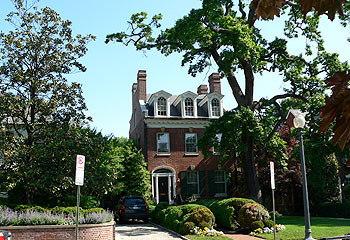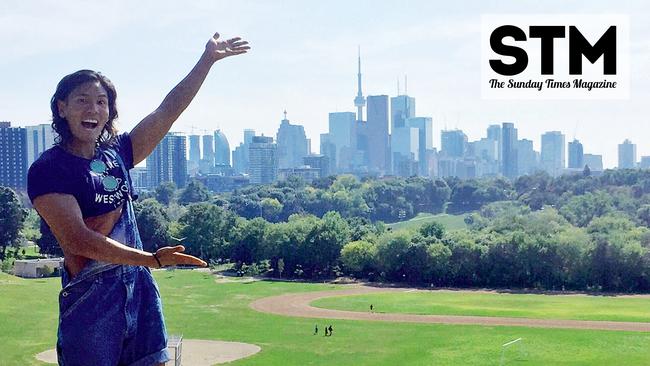Colour me Georgetown
AWAY from the monuments and museums, Andrew Taylor explores the leafy streets and colourful homes of Washington DC's stylish Georgetown.

FASCINATED by the colourful timber facades with their slatted shutters seemingly glued flat to the wall, we were surprised to find ourselves late one afternoon inside one of these cute two-storey houses.
We'd been greeted by the house owner, a woman tending to her pot plants, with a glass of chardonnay in hand, in the small front garden.
We were wandering the shady and quiet 35th, 34th and 33rd residential streets between M and O streets in Washington DC's upmarket university suburb of Georgetown.
She told us her free-standing timber house was built back in the 1820s and luckily, she had a copy of the history of the building. A few weeks before the original copy had been lost in a fire which destroyed the Georgetown Neighbourhood Library on the appropriately named Book Hill Park on the other side of Georgetown's main drag, Wisconsin Avenue.
She pointed to a heart carved into the decorative fascia under the spouting, apparently a declaration of the builder's love for his wife.
"Would you like to see out back?" she said, returning her chardonnay to the table under the umbrella.
There she had scores of potted roses, tall trees and a hot tub "where I sit at night and look at the stars".
The walls of her kitchen were red (all the kitchens in her previous house had been red, she said) and the tiny dining-sitting room was crammed with an eclectic array of memorabilia. Certificates of her father's life in the merchant navy and quilt work of her grandmother featured on the walls.
We were enjoying the residential streetscapes of this very well-to-do suburb of the national capital, and were surprised with the warm greeting offered to us camera-toting tourists.
We learned that Georgetown, on the banks of the Potomac River, 200-plus years ago serviced by the Chesapeake and Ohio Canal (its banks now a National Park and popular walking track) was a thriving port for coal, timber, flour, fur, iron ore, whisky, tobacco, as well as slave trading.
The river silted up, the canal failed through flood and then depression years followed and slum conditions prevailed.
Its current stylish demeanour evolved through the Franklin D Roosevelt and John F Kennedy eras, especially the Kennedys in the 1950s. Now with its university student population, Georgetown is far from staid and is well populated with bars and restaurants.
Colonial, Federal, Second-Empire and Victorian architecture are on show here, ranging from neat timber cottages like our friend's to terrace-style rows and grand brick homes, many of which are high on the hill and command views to the 170m Lincoln Memorial and the trees shading the headstones at the impressive Arlington Cemetery on the other side of the Potomac.
Most houses here are two or three storeys, with equal proportion of timber and brick. The brick buildings are mainly natural red-brown colour but some have been adorned by the paint brush. Some brick versions boast superior top floor verandahs.
Some wear historic plaques, like the Federal style house at 3038 N Street which was lent to Jacqueline Kennedy after her husband's assassination. She subsequently bought a house across the street.
Almost all dwellings - brick and timber – wear their street faces with a sense of polished pride. Only a few shutters required slat replacement therapy.
As for our new friend's shutters, they were in excellent condition, thank you!



